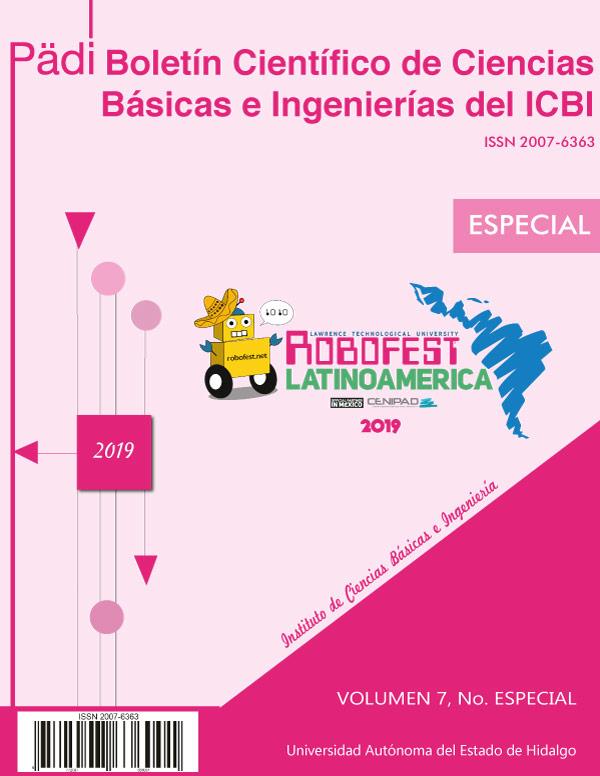Teaching Forward Kinematics Using LEGO Mindstorms
Abstract
The present work aims to present a methodology for the teaching of forward kinematics of manipulators, which is one of the main topics of an industrial robotics course for undergraduate students. The most common technique for teaching the forward kinematics of manipulators is the Denavit-Hartenberg method, which is based on an analysis of the rigid body of the manipulator to obtain parameters that allow the definition of homogenous transformation matrices and thus, to relate the reference system of the final effector with the reference system of the base of the robot. The simulation and experimentation in the laboratory can be of great help to improve the understanding of these concepts. The proposed approach allows students 1) Reaffirm their knowledge through a platform of manipulators modeled in SOLIDWORKS, exported to the MATLAB Simulink environment and, 2) Verify their ability to solve a forward kinematics problem of a physical manipulator built with the LEGO Mindstorms kit and controlled by the LEGO Mindstorms EV3 library for MATLAB.
Downloads
References
Spong, Mark W. & Vidyasagar, M., 2008, Robot dynamics and control, John Wiley & Sons.
Corke, P. I., 2011, Robotics, visión & control, Springer-Verlag, Berlin, Heidelberg.
Gil, A., O. Reinoso, J.M. Marin, L. Paya and J. Ruiz, 2014, Development and deployment of a new robotics toolbox for education, Comput Appl Eng. Educ., 1-12.
Joshi, S. S. , 2004, Development and implementation of a MATLAB simulation project for a multidisciplinary graduate course in autonomous robotics, Comput. Appl. Eng. Educ., Vol. 12, p.p. 54–64.
Miller, D., I. Nourbakhsh, and R. Siegwart, 2008 Robots for education Springer Handbook of Robotics, Springer-Verlag, Berlin, Heidelberg, p.p.,1283–1301.
Denavit, J., and R. S. Hartenberg, 1955, A kinematic notation for lower-pair mechanisms based on matrices, J Appl Mech 22, 215–221.
Othayoth, R., Rajeevlochana G. Chittawadigi, Ravi P. Joshi & Subir K. Saha, 2017. Robot kinematics made easy using RoboAnalyzer software. Computer Applications in Engineering Education, vol. 25, no 5, p. 669680.
Gil, Arturo, Oscar Reinoso, José Maria Marin, Luis Paya, Javier Ruiz, 2014. Development and deployment of a new robotics toolbox for education. Computer Applications in Engineering Education, vol. 23, no 3, p. 443454.
Berenguel, M., Francisco rodríguez, José Carlos Moreno, José Luis Guzmán, Ramón González, 2015. Tools and methodologies for teaching robotics in computer science & engineering studies. Computer Applications in Engineering Education, vol. 24,no 2, p. 202-214.
Indri, M., Lazzero, I. & Bona, B., 2013. Robotics education: Proposals for laboratory practices about manipulators. Emerging Technologies & Factory Automation (ETFA), 2013 IEEE 18th Conference on. IEEE. p. 1-8.
Barrientos, A., 2007. Fundamentos de robótica. Mc Graw-Hill.













